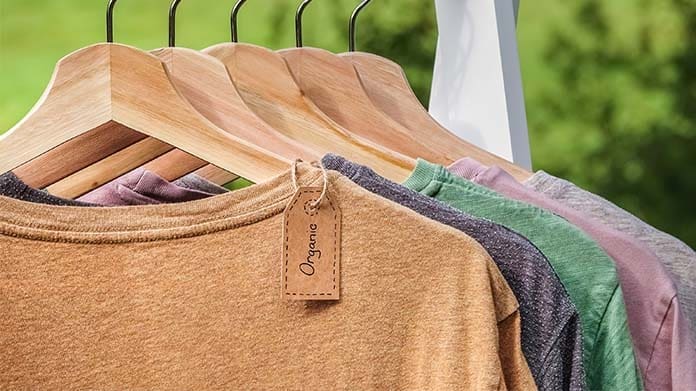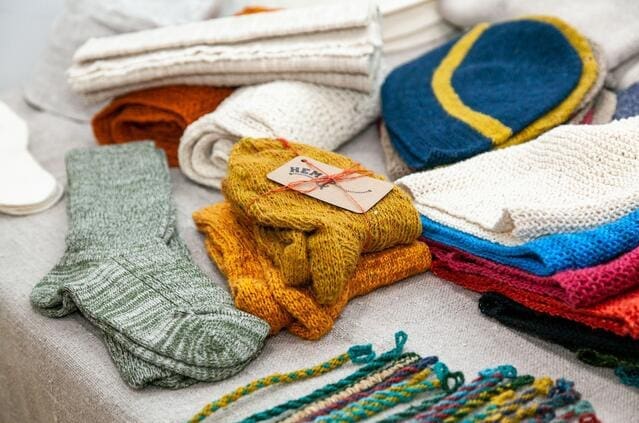
Koyel Ghosh
Hemp has been a practical and useful fabric/textile for centuries. Hence, there is no wonder that hemp clothing would be one of the important products to hit today’s sustainable-conscious fashion industry. One of the most eco-friendly fabrics known today, hemp fabrics constitute cannabis sativa fiber or industrial hemp and boasts of several benefits over other textile materials such as acrylic, polyester, nylon, and spandex for making fabrics as it is a natural, renewable and biodegradable substance. The material can be produced in less than 100 days and does not need much water unlike cotton, which is water-intensive and takes longer to grow and mature. Hemp also boasts higher tensile strength than cotton fiber and scores high in terms of durability compared to cotton. Being hypo-allergenic, UV resistant, soft, porous, resistant to mildew, a good moisture absorbent, and a color retainer, hemp fabric is an excellent choice for summer. As hemp is a very absorbent material, it is a great choice for towels, diapers, and baby clothing. Further, casual wear and high-quality linen clothing are all ideal markets for hemp. For such reasons, making the switch to hemp is a win-win for the players in the industry.
Hemp clothing is fast becoming popular in the fashion industry. Owing to the growing awareness regarding the environment and climate change, consumers now want to ensure that the brands they buy from are using eco-friendly and sustainable materials. This is a major trend that drives the hemp clothing market. Moreover, most clothing companies have their online channels where consumers get valuable information regarding the latest products, reviews provided by other consumers, and more. The online platforms also offer a wide range of clothing products and allow consumers to compare prices and products by various sellers. For all these reasons, the number of consumers shopping online is only increasing, which catalyzes the growth of the market. Hemp clothing is also becoming more fashionable, and new styles are continuously being introduced, which is attracting more fashion-conscious consumers. Furthermore, technological advancements in the hemp clothing sector that make it easier for farmers to produce, process, and distribute hemp for commercial use further propel the market growth. According to a recent report by the research firm Allied Market Research, the global hemp clothing market is set to touch a CAGR of 27.1% during the forecast period, 2022 to 2031. The Covid-19 pandemic created several challenges for the importers and exporters in the developing and developed markets. However, the market is gaining traction post the pandemic.
The hemp clothing market consists of manufacturing companies of all sizes. More companies are turning to hemp as they see it as a potential market for the future. For instance, in September 2022, London-based clothing brand Vollebak unveiled its new hoodies and sweatpants featuring hemp and black algae. Carbon black pigment, being a harmful substance, the company replaced it with a color made from black algae.
With the availability of hemp growing owing to legislation changes across the world, more businesses are realizing the benefits of the material concerning finance and the environment. In June 2022, Dennison, a luxury menswear brand from India unveiled a hemp collection – the company’s very first initiative toward sustainability. The collection features organically grown fabric with 33% less water use. The buttons used in the fabric are made of coconut instead of plastic and the stitching comprises recycled threads. The hemp collection also comes with recycled labels and paper fusing with green packing.
Then in April 2022, Reins Clothing, the brand for sustainable kids clothing introduced their ‘Ollie The Octopus’ range, which features hemp and recycled materials. The clothing line includes kids’ T-shirts, skate jeans, and more. In February 2022, Vicunha, a Brazilian jeanswear firm introduced its first denim made with hemp. Four products have been used for the new product. The denim includes hemp and hemp light and the twill includes Itacaré and Maragogi. The launch is in line with the company’s strategy to develop sustainable solutions that save resources and reduce the carbon footprint on the earth.
In November 2021, the sustainable fashion brand Pangaia launched a line of eco-friendly jeans and jackets made with a new plant-based fabric called Panhemp. The clothing range constitutes rain-fed hemp and organic cotton and a natural indigo dye from an Indigofera plant.
Levi Strauss & Co., the U.S-based clothing company recently collaborated with the textile-to-textile recycling Swedish company Re:NewCell to produce WellThread collections featuring cottoned hemp to embrace sustainability. The Wellthread collection is a paradigm of the transition the company has made and a snapshot of its goals for the coming years. Levis is one of the first businesses to include hemp fiber in its denim manufacturing. In 2019, the company unveiled a collection of denim featuring 30% hemp. However, it later increased the use of hemp and in 2021 the company introduced a Wellthread clothing collection made with 55% hemp. Many other brands such as Patagonia and Toad&Co helped the hemp clothing market achieve more popularity.
So why hemp has taken so long to become mainstream? There are many reasons for this. One of the main reasons is that it was difficult to make hemp as soft as cotton. Thanks to modern technological advancements which have helped develop hemp clothing that is soft and subtle on the skin and without which the market growth would have been distantly possible.
Article by: Prasun Rai

